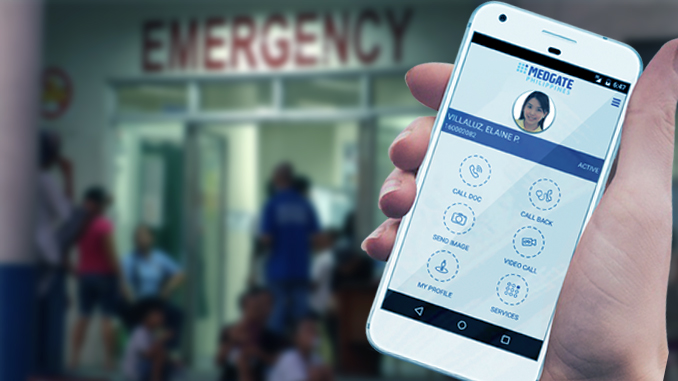With hospital emergency rooms overloaded with patients that deal with life-threatening medical emergencies, the world’s leading telemedicine pioneer has a suggestion for Filipinos who aren’t sure if they should rush to the emergency room of the nearest hospital: call a doctor first.
According to Medgate Philippines Chief Executive Officer Robert Parker, “being able to talk to a doctor when the need arises is by itself very comforting. In addition to that, the caller can also be given a diagnosis and be guided as to whether he or she really needs to go to a hospital.”

Medgate Philippines is the leading international provider of telemedicine, with operations in Switzerland, the Middle East, Australia, and the Philippines. Telemedicine is the use of electronic communications to transmit and exchange medical information and data to treat patients. It allows people to call doctors via their cellular phones and get medical advice without having to go to a hospital or a doctor’s clinic.
Parker said that telemedicine providers like Medgate Philippines also ensure that non-emergency cases don’t flood emergency rooms and render them ineffective in addressing critical cases.
“Even the emergency rooms of the top hospitals in the country have limited space and personnel, and around the clock they have to attend to life-threatening cases, like the victims of vehicular accidents that occur on a daily basis,” Parker stressed.

Data from the Metro Manila Development Authority reveal that in Metro Manila alone there were 95,615 traffic accidents in 2015––or an average of 262 accidents every day––resulting in 519 fatalities and injuries to 17,103 people.
Medgate Philippines Medical Director Dr. Arlene Claudio explained that in cases of big vehicular accidents––such as the tragedy in Tanay involving 50 college students whose bus crashed into an electric pole last Monday––emergency rooms are sometimes hard-pressed to deal with the huge volume of casualties.
“Most emergency rooms can handle 15, maybe 20, patients at a given time, which is why sometimes the victims have to be brought to different hostpitals for treatment,” explained Claudio.
“When the victims come in, they require the full attention of medical personnel, and having to deal with non-emergency cases unnecessarily distracts them from that.”

